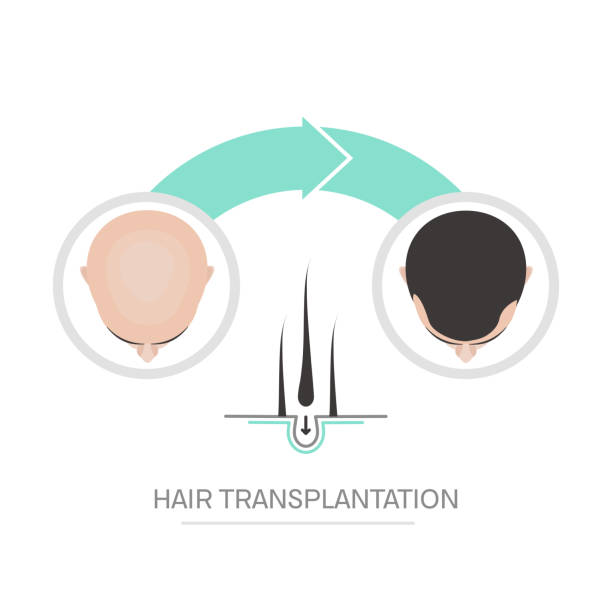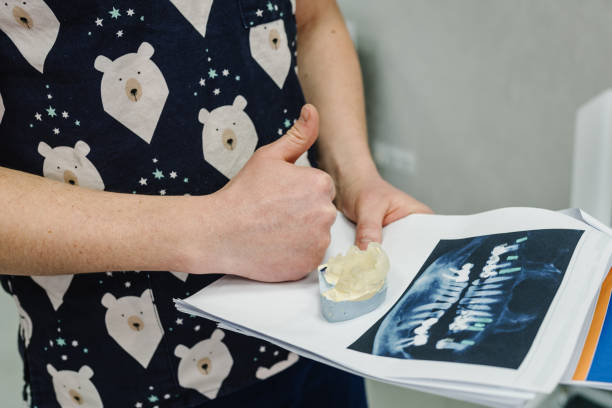Dental implants are widely considered the gold standard for replacing missing teeth. They appear, feel, and function like natural teeth, offering sufferers an extended-lasting solution with the potential to last many years. But there’s one huge requirement for dental implants: a healthy and enough jawbone.
The implant, usually made from titanium or zirconia, is surgically placed into the jawbone. For this put to hold up sturdy and act like a herbal root, it needs a strong foundation. Unfortunately, not every affected person has enough bone to help an implant. That’s where bone answers come in.
This article explores why bone health is important for implants, what reasons for bone loss, and the exclusive options to be had to rebuild or regenerate bone so implants can succeed.
Why Bone Matters for Dental Implants
Think of a dental implant as a screw securing a shelf to a wall. If the wall is powerful, the screw will live firmly in the vicinity. But if the wall is thin or inclined, the screw also can wobble or fall out. The jawbone performs the identical function for an implant.
That’s why dentists determine bone quantity and density before recommending implants. Imaging gear like virtual X-rays and 3D cone beam CT scans permit them to measure the height, width, and first-rate of the bone. If the bone isn’t enough, solutions like bone grafts, sinus lifts, or regenerative treatments can be encouraged.
Causes of Bone Loss in the Jaw
Several factors contribute to insufficient bone for implants:
- Tooth loss – Missing enamel trigger bone resorption within the empty socket. The longer a teeth is lacking, the extra bone is misplaced.
- Periodontal disease – Advanced gum disorder erodes both gum tissue and the underlying bone.
- Trauma or harm – Accidents can fracture or damage the jawbone.
- Infections – Severe dental infections can damage bone round a enamel.
- Developmental conditions – Some human beings certainly have thinner bone structure in positive regions.
- Long-term denture use – Wearing dentures with out implants hurries up bone shrinkage due to the fact the jaw isn’t inspired.
The precise information is that present day dentistry gives numerous bone grafting solutions to restore or create the proper conditions for implants.
Types of Bone Solutions for Implants
Bone answers can be grouped into surgical grafting tactics, regenerative substances, and opportunity strategies. Let’s break them down.
1. Bone Grafting
Bone grafting is the most commonplace answer for patients with insufficient bone. In easy phrases, it includes adding new bone cloth to the jaw to create a stronger foundation for implants.
How it works:
- The dentist locations bone fabric into the deficient vicinity.
- Over time, the grafted bone fuses with the natural bone via a manner known as osseointegration.
- After recuperation (numerous months), the website online will become strong sufficient to assist an implant.
Types of bone grafts:
- Autograft – Bone is taken from the affected person’s own frame (often from the chin, hip, or again of the jaw). This is taken into consideration the gold wellknown due to the fact the body acknowledges it as herbal tissue.
- Allograft – Donor bone from every other human, normally processed and sterilized from a tissue bank.
- Xenograft – Bone from an animal source (normally bovine/cow bone) this is specifically treated to be biocompatible.
- Alloplast – Synthetic substances together with calcium phosphate or hydroxyapatite.
Each type has pros and cons concerning availability, recuperation time, and integration, but all are usually used and safe.
2. Socket Preservation
When a tooth is extracted, the encompassing bone can decrease rapidly. To prevent this, dentists may additionally carry out socket protection, also called ridge renovation.
In this manner, bone graft material is positioned immediately into the socket right away after teeth removal. This continues bone peak and width till an implant can be positioned later.
Socket protection is a proactive step that prevents the need for extra complex grafting down the line.
3. Sinus Lift (Sinus Augmentation)
In the higher lower back jaw, bone height is often restricted due to the proximity to the sinus cavity. If implants are wanted in this place, the dentist may additionally advocate a sinus raise.
How it works:
- The sinus membrane is gently lifted upward.
- Bone graft material is located in the space below the lifted sinus.
- After recuperation, there may be sufficient bone peak to place an implant effectively without penetrating the sinus.
Sinus lifts are ordinary strategies these days and appreciably growth implant fulfillment costs inside the top jaw.
4. Ridge Augmentation
Sometimes, the jawbone is just too thin or too narrow to assist implants. Ridge augmentation is a technique that widens or rebuilds the ridge of the jaw.
This can involve adding bone graft fabric or using specialised membranes that guide new bone growth. Ridge augmentation creates a broader and stronger base for implant placement.
5. Guided Bone Regeneration (GBR)
Guided bone regeneration makes use of barrier membranes to guard bone grafts at some point of recovery. These membranes prevent tender tissue from growing into the grafted region, allowing bone cells to regenerate more effectively.
GBR is often combined with grafting procedures for predictable effects. It’s specially useful in instances wherein implants are positioned in areas with tremendous bone loss.
6. Growth Factors and Stem Cell Therapies
Modern improvements in regenerative dentistry consist of the usage of platelet-rich plasma (PRP), platelet-rich fibrin (PRF), or even stem cell-based techniques to speed up recovery and inspire new bone regeneration.
- PRP/PRF are made from the affected person’s very own blood and implemented to the surgical site. They launch boom factors that accelerate bone and tissue recuperation.
- Stem cell techniques are nevertheless evolving however keep promise for destiny implant dentistry, supplying the capacity to rebuild bone extra evidently and fast.
7. Zygomatic Implants (When Bone Solutions Aren’t Enough)
For sufferers with intense bone loss inside the higher jaw, conventional bone grafting may not be viable or applicable. In those cases, zygomatic implants provide an opportunity.
These implants are longer and anchored into the zygomatic bone (cheekbone) rather than the jawbone. Since the cheekbone is certainly dense, it offers strong help with out grafting.
This approach is greater complicated however can restore feature for patients who otherwise wouldn’t qualify for implants.
Healing Time for Bone Solutions
The timeline for bone regeneration varies depending on the process:
- Socket renovation – 3 to 6 months earlier than implant placement.
- Bone grafting (small areas) – 4 to 6 months.
- Sinus carry – 6 to 9 months.
- Ridge augmentation – 6 to 9 months.
- Zygomatic implants – implants can be positioned immediately, regularly fending off long recovery delays.
Patience is prime. While waiting numerous months can also appear irritating, permitting right recovery guarantees the implant has the pleasant chance of long-term success.
Risks and Considerations
Like any surgical treatment, bone answers carry a few risks:
- Infection of the graft or surgical site.
- Graft rejection or failure (rare but feasible).
- Sinus complications with sinus lifts.
- Prolonged recuperation in patients with fitness issues like diabetes or smoking conduct.
Your dentist or oral health practitioner will evaluate your clinical history and lifestyle factors before recommending the quality technique. Following submit-surgical operation instructions carefully—which includes avoiding smoking, practicing accurate oral hygiene, and attending checkups—substantially improves effects.
Benefits of Bone Solutions
While those techniques add greater steps to the implant adventure, the blessings are nicely worth it:
- Higher implant fulfillment costs – A robust foundation minimizes implant failure.
- Improved facial shape – Rebuilding bone facilitates keep natural facial look, preventing the “sunken” appearance from bone loss.
- Better chewing function – Adequate bone ensures implants can cope with biting forces efficiently.
- Long-time period oral fitness – Bone regeneration helps healthful gums and enamel around the implant.
Who Needs Bone Solutions?
Not each implant patient calls for grafting or augmentation. Candidates who may advantage include:
- Patients missing teeth for many years.
- People with periodontal disease are harmed.
- Those with certainly thin bone.
- Patients desiring implants inside the top of again jaw close to the sinuses.
- Long-time period denture wearers with giant jawbone shrinkage.
Your dentist will decide this at some point during the initial evaluation using imaging and diagnostic equipment.
Conclusion
Dental implants provide an existence-changing answer for missing teeth, however they require a sturdy jawbone to prevail. When bone is inadequate, modern dentistry presents a huge range of bone solutions—from grafting and sinus lifts to regenerative treatment plans and opportunity implant designs.
Though those processes add extra steps and recuperation time, they appreciably boom the fulfillment and durability of dental implants. If you’re thinking about implants however have been informed you lack sufficient bone, don’t lose wish. With these days’s advanced strategies, probabilities are excessive that an answer exists to give you the assured smile you deserve.



